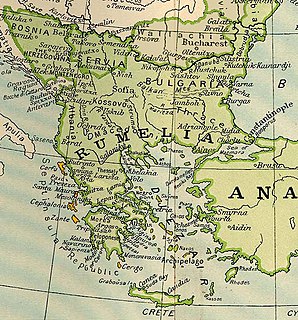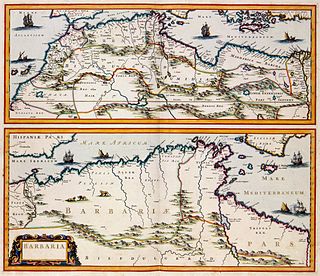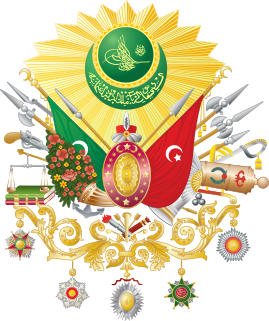See also
| History | |||||||||||||||||||||||||
|---|---|---|---|---|---|---|---|---|---|---|---|---|---|---|---|---|---|---|---|---|---|---|---|---|---|
| Politics |
| ||||||||||||||||||||||||
| Economy | |||||||||||||||||||||||||
| Society |
| ||||||||||||||||||||||||
| | This Ottoman Empire–related article is a stub. You can help Wikipedia by expanding it. |
It is proposed that this article be deleted because of the following concern:
If you can address this concern by improving, copyediting, sourcing, renaming, or merging the page, please edit this page and do so. You may remove this message if you improve the article or otherwise object to deletion for any reason. Although not required, you are encouraged to explain why you object to the deletion, either in your edit summary or on the talk page. If this template is removed, do not replace it . The article may be deleted if this message remains in place for seven days, i.e., after 19:35, 15 September 2022 (UTC). Find sources: "Renegade thesis" – news · newspapers · books · scholar · JSTOR |
The Renegade thesis explains the emergence of the Beylik of Osman and, in particular, the successes during the Rise of the Ottoman Empire and Classical Age of the Ottoman Empire with the successful integration of local renegades of all classes, combined with the following policy of meritocracy. [1]
The first example of a significant renegade is Köse Mihal, and Stephan Gerlach describes in his diary very much that often during that time prominent French, Italian, Spanish and Hungarian noblemen became Turkish renegades. [2]

Bayezid I, also known as Bayezid the Thunderbolt was the Ottoman Sultan from 1389 to 1402. He adopted the title of Sultan-i Rûm, Rûm being an old Islamic name for the Roman Empire. He decisively defeated the Crusaders at Nicopolis in 1396. Bayezid unsuccessfully besieged Constantinople and later was defeated and captured by Timur at the Battle of Ankara in 1402 and died in captivity in March 1403, triggering the Ottoman Interregnum.

Rumelia, etymologically "Land of the Romans", at the time meaning Eastern Orthodox Christians and more specifically Christians from the Byzantine rite, was the name of a historical region in Southeastern Europe that was administered by the Ottoman Empire, corresponding to the Balkans. In its wider sense, it was used to refer to all Ottoman possessions and vassals that would later be geopolitically classified as "the Balkans".

The terms Barbary Coast, Barbary, Berbery or Berber Coast were used in English-language sources from the 16th century to the early 19th to refer to the coastal regions of North Africa or Maghreb, specifically the Ottoman borderlands consisting of the regencies in Algiers and Tripoli, as well as the Beylik of Tunis and the Sultanate of Morocco. The term originates from the name of the Berbers.

The Ottoman Empire was founded circa 1299 by Osman I as a small beylik in northwestern Asia Minor just south of the Byzantine capital Constantinople. The Ottomans first crossed into Europe in 1352, establishing a permanent settlement at Çimpe Castle on the Dardanelles in 1354 and moving their capital to Edirne (Adrianople) in 1369. At the same time, the numerous small Turkic states in Asia Minor were assimilated into the budding Ottoman sultanate through conquest or declarations of allegiance.

The Karamanids, also known as the Emirate of Karaman and Beylik of Karaman, was one of the Anatolian beyliks, centered in South-Central Anatolia around the present-day Karaman Province. From the middle 1300s until its fall in 1487, the Karamanid dynasty was one of the most powerful beyliks in Anatolia.

The Isfendiyarids or Isfendiyarid dynasty, also known as the Beylik of Sinop, Beylik of Isfendiyar, Jandarids or Beylik of Jandar, was an Anatolian Turkoman beylik that ruled principally in the regions corresponding to present-day Kastamonu and Sinop provinces of Turkey, also covering parts of Zonguldak, Bartın, Karabük, Samsun, Bolu, Ankara and Çankırı provinces, between 1292 and 1461, in the Black Sea region of modern-day Turkey. The region is also known in Western literature as Paphlagonia, a name used for the same geographic area during the Roman period.

Anatolian beyliks were small principalities in Anatolia governed by beys, the first of which were founded at the end of the 11th century. A second more extensive period of foundations took place as a result of the decline of the Seljuq Sultanate of Rûm in the second half of the 13th century.

The Germiyanids was a prominent Anatolian beylik established by the Oghuz Turkish tribes after the decline of Sultanate of Rûm. However, while the beylik was always mentioned as Turkoman or Oghuz Turkish, the population consisted of Turks and Yezidi Kurds, brought by the Seljuks from the east of Malatya to western Anatolia as militia guards against the threatening Turkish tribesmen.

The Aydinids or Aydinid dynasty, also known as the Principality of Aydin and Beylik of Aydin, was one of the Anatolian beyliks and famous for its seaborne raiding.

Mentese was the first of the Anatolian beyliks, the frontier principalities established by the Oghuz Turks after the decline of the Seljuk Sultanate of Rum. Founded in 1260/1290, it was named for its founder, Menteshe Bey. Its capital city was Milas (Mylasa) in southwestern Anatolia.

Hamidids or Hamed Dynasty also known as the Beylik of Hamid, was one of the 14th century Anatolian beyliks that emerged as a consequence of the decline of the Sultanate of Rum and ruled in the regions around Eğirdir and Isparta in southwestern Anatolia.
Yakup II of Germiyan also known as Yakup Çelebi, was the ruler of Germiyanids an Anatolian beylik between 1388 and 1429.
Kasım of Karaman was the last bey of the Karaman Beylik, a Turkish principality in Anatolia in the 15th century.

Ottoman wars in Asia refers to the wars involving the Ottoman Empire in Asia. Ottoman Empire was founded at the beginning of the 14th century. Its original settlement was in the northwest Anatolia where it was a small beylik (principality). Its main rival was Byzantine Empire. In 1350s Ottomans were able to cross the Dardanelles strait and eventually they conquered most of the Balkans. Although they mainly concentrated their expansions in Europe, they also expanded their territories in Asia, mainly in Fertile Crescent and Arabian peninsula.

The Sanjak of Siroz or Serres was a second-level Ottoman province encompassing the region around the town of Serres in central Macedonia.
İsfendiyar Bey was the bey (ruler) of Candaroğlu Beylik an Anatolian beylik between 1385 and 1440. Although the name of the dynasty is Candar, Ottoman Empire historians called the beylik İsfendiyaroğlu because of İsfendiyar's long reign.
Fatma Sultan was an Ottoman princess, daughter of Sultan Selim II of the Ottoman Empire and his favorite Nurbanu Sultan. She was the granddaughter of Suleiman the Magnificent and Hurrem Sultan, sister of Sultan Murad III and aunt of Sultan Mehmed III.
Beylik of Hacıemir was a beylik (lordship) in the north Anatolia in a part of 14th and 15th centuries. The historical documents about the beylik are scarce. In some documents the beylik was named Bayramoğulları and in other Hacıemiroğulları. Actually Hacıemir was Bayram's son. In Greek documents the name of the beylik was "Chalybes beylik"

Stephan Gerlach was a German Lutheran theologian. Gerlach was an extremely important figure in the second half of the 16th century.
An Uç Bey or Uch Bey was the title given to semi-autonomous warrior chieftains during the Sultanate of Rum and the Rise of the Ottoman Empire. As leaders of akinji warrior bands, they played a leading role during the conquests of the Byzantine Empire and the other Christian states of the Balkans.